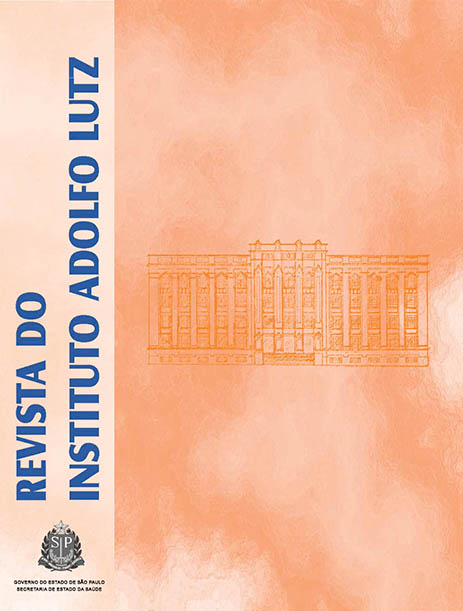Abstract
This study evaluated the microbiological quality of industrialized and handmade cashew nuts sold by street sellers in Teresina, PI. Forty samples of cashew nuts were collected, being 21 samples of industrialized products from three brands (“A”, “B” and “C”) and 19 samples of handmade nuts (“D”), which were analyzed on coliforms enumeration at 35 °C and 45 °C (MPN/g), Salmonella spp. isolation, and fungi and yeasts counting. Samples of brand “D” showed the highest coliforms counting at 35 °C (1.16 × 101 MPN/g); values of 7.0 MPN/g were found for coliforms at 45 °C, and of 1.22 × 102 CFU/g for fungi and yeasts. In the brand “A” samples, values of 4.0 MPN/g for coliforms at 35 °C and 45 °C, and of 1.0 × 102 CFU/g for fungi and yeasts were detected. Forty-three fungi strains were isolated. The mostly prevalent species were the aggregated Aspergillus niger (64.7%), P. corylophillum (33.3%) and P. citrinum (29.2%). The samples of industrialized cashew nuts and the handmade nuts showed satisfactory hygienic and sanitary conditions in compliance with the legislation in force.References
1. Garruti DS, Franco MRB, Silva MA, Janzantti NS, Alves GL.Compostos voláteis do sabor de pseudofrutos de cajueiro anão precoce (Anacardiumoccidentale L.). Bol Pesq Desenv/Embrapa Agroind Trop. 2001;4,CCp-76:29.
2. Paiva FFA, Silva Neto RM, Paula Pessoa PFA. Minifábrica de processamento de castanha de caju.Fortaleza: Embrapa Agroindústria Tropical; 2000. (Embrapa Agroindústria Tropical. Circular Técnica 07).
3. Silva MCM, et al. Avaliação microbiológica da castanha de caju (Anacardium occidentale L.) processada pela cooperativa COCAJUPI do Município de Picos, PI. XVIII Seminário de Iniciação Científica e I Seminário em Desenvolvimento Tecnológico e Inovação da UFPI, novembro de 2009, Teresina.
4. Rodrigues KL, Gomes JP, Conceição RCS, Brod CS, Carvalhal JB, Aleixo JAG. Condições higiênico-sanitárias no Comércio Ambulante de Alimentos em Pelotas-RS. Rev Ciênc Tec Alim. 2003;23(3):447-52.
5. Brasil. Ministério da Agricultura, Pecuária e Abastecimento. Instrução Normativa nº 62, de 26 de agosto de 2003. Oficializa os Métodos Analíticos Oficiais para Análises Microbiológicas para Controle de Produtos de Origem Animal e Água. Diário Oficial [da] República Federativa do Brasil. Brasília, DF, 18 set 2003.
6. Pitt JI, Hocking AD. Fungi and Food Spoilage. 3. ed. Londres/Nova York: Springer Dordrecht Heidelberg; 2009.
7. Klich MA. A laboratory guide to the common Aspergillus species and their teleomorphs. CSIRO– Division Processing. Austrália, 2002.
8. Pitt JI. Guía del laboratorio para la identificación de especies comunes de Penicillium. CSIRO – Division of Food Processing. Austrália, 2004.
9. Costa JMC, Guerra KT, Maia GA, Rocha EMFF. Avaliação físico-química e microbiológica da amêndoa da castanha de caju.Publ UEPG Exact Earth Sci Agr Sci Eng. 2009;15(3):181-7.
10. Brasil. Ministério da Saúde. Resolução RDC nº 12, de 2 de janeiro de 2001. Aprova o regulamento técnico sobre padrões microbiológicos para alimentos. Diário Oficial [da] República Federativa do Brasil. Brasília, DF, n, 10 jan 2001, seção 1, nº 7-E, p. 45-53.
11. Franco BDGM, Langraf M. Microbiologia dos Alimentos. São Paulo: Atheneu; 2008.
12. Freire FCO, Kozakiewicz Z. Filamentous fungi, bacteria and yeasts associated with cashew kernels in Brazil. Rev Ciênc Agron. 2005;36(2):249-54.
13. Costa AKF, Freire FCO, Vieira IGP, Andrade JA, Mendes, FNP. Fungos associados à castanha-do-Brasil (Bertholletiaexcelsa Humb. & Bompl) e ao amendoim (ArachishypogaeaL.) comercializados em Fortaleza (Ceará). Rev Ciênc Agron. 2009;40(3):455-60.

This work is licensed under a Creative Commons Attribution 4.0 International License.
Copyright (c) 2012 Instituto Adolfo Lutz Journal
